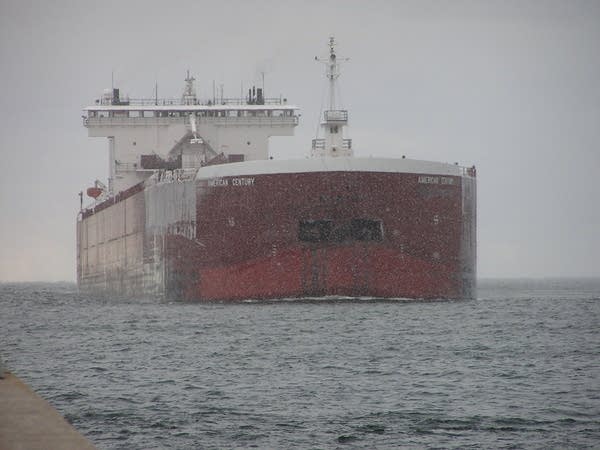New EPA standards exempt most Great Lakes ships from installing new treatment systems
Opponents say it could result in arrival of more invasive species

Go Deeper.
Create an account or log in to save stories.
Like this?
Thanks for liking this story! We have added it to a list of your favorite stories.
New standards adopted by the U.S. Environmental Protection Agency exempt the existing fleet of ships on the Great Lakes — including in the Duluth-Superior harbor — from installing new ballast water treatment systems to control the spread of invasive species.
The standards require ocean-going vessels, known as “salties,” as well as new ships built that travel only within the Great Lakes, known as “lakers,” to install new onboard treatment systems.
But they don’t apply to the current fleet of lakers.
Federal regulators agreed with industry representatives who argued there are technological constraints, as well as economic challenges, in adding the systems to treat ballast water.
Turn Up Your Support
MPR News helps you turn down the noise and build shared understanding. Turn up your support for this public resource and keep trusted journalism accessible to all.
Ballast is used to balance the giant ships, up to 1,000 feet long, when they load and unload cargo. However the ballast water scooped up in one place may contain plants, shellfish and other life forms which cause problems when they are dumped in a distant post.
A host of environmental groups, along with some officials from Great Lakes states, argued for a stricter standard.
“It’s woefully inadequate,” said Steve Morse, executive director of the Minnesota Environmental Partnership. “It really doesn’t do anything to regulate the ballast water in the current fleet of lakers, many of which will be with us for half a century or more yet, in that these ships last for a long time.”
But Jeff Udd, director of government and environmental affairs at the Duluth Seaway Port Authority, said the port is supportive of how the EPA approached the new rulemaking.
“We think it’s a reasonable conclusion that they came to,” said Udd.
A significant number of the nonnative aquatic species that have invaded the Great Lakes, critters such as zebra and quagga mussels, hitched rides from Europe and Asia, hidden in ballast water tanks deep in the bowels of ocean-going freighters.
When those ships flushed their ballast tanks in Great Lakes ports, they inadvertently dumped those organisms into the lakes.
Without natural predators, many of those species have wreaked havoc in the Great Lakes, where they can outcompete native species, degrade habitat and alter the food web, in addition to causing tens of millions of dollars in economic damages.
Starting in 2006, U.S. and Canadian officials began to require salties to flush their ballast tanks with saltwater before entering the Great Lakes — a process known as “swish and spit.” The saltwater kills the freshwater organisms left in the tanks.

Since then, there have been no new documented introductions of invasive species in the Great Lakes.
But environmental groups say lakers can still move invasive species around within the Great Lakes — especially to the Duluth Superior Harbor, where 85 percent of all the ballast water dumping in the Great Lakes occurs, said Morse.
A 2018 study found lakers had transported several species of nonnative zooplankton in their ballast tanks, including a species called the Bloody Red Shrimp, to western Lake Superior.
Minnesota and Wisconsin officials had asked the EPA for stricter requirements in comments leading up to the development of the new standards.
In 2022, Minnesota Pollution Control Agency commissioner Katrina Kessler wrote to the EPA that its proposed rule, as it applies to lakers, “is a significant step back backward in controlling AIS [aquatic invasive species].”


